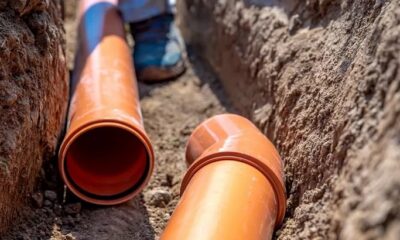Features
Road Curve Design and Construction
Everything you need to know about road curves.

What is a road curve?
Road curves are sections of a roadway that deviate from a straight path, introducing bends or gradual changes in the road’s direction.
Having a curve in a road accommodates terrain variations and helps drivers navigate turns smoothly, thereby enhancing safety on the road.
Curves are basically classified as horizontal and vertical. Horizontal curves are provided in the horizontal plane and are generally circular or parabolic.
On the other hand, vertical curves are provided in the vertical plane and are designed to accommodate changes in slope and gradient.
Types of horizontal road curves include simple curves, compound curves, deviation curves, reverse curves, and transition curves.
Types of vertical curves include valley curves and summit curves.
Here are the most popular road curves.
1. Horizontal curve
This type of curve enables the roadway to conform to the natural contours of the terrain, which is a key consideration in areas with steep or hilly topography.
Horizontal curves are designed to shift the road’s direction while ensuring that vehicles maintain a safe speed limit.
2. Simple curve
A simple road curve is a single, continuous bend that gradually changes the direction of the road without any sudden interruptions.
This type of curve is designed to facilitate safe and comfortable navigation for drivers by allowing a smooth transition from one direction to another without abrupt changes in the road’s alignment.
3. Compound curve
This is a horizontal curve comprising two or more simple curves of varying radii that bend the same way and are on the same side of a shared straight line.
This type of road curve facilitates a seamless transition between straight road segments and simple curves, thus helping drivers negotiate turns safely.
Compound curves are common in regions with restricted rights-of-way or hilly terrain where direct pathways are not practical.
RELATED: Types of Road Construction Materials
4. Transition curve
This is a road curve with a gradual elevation shift on the outside of the curve to help drivers make smooth turns at higher speeds.
Having such a curve in the road provides a smooth and secure shift in curvature, which enables drivers to sustain a comfortable speed while navigating the curve.
Transition curves are commonly found on high-speed roads, and their length is determined by factors such as road grade, curvature radius, and design speed.
5. Reverse curve
A reverse curve is the opposite of a compound curve and consists of two simple curves that bend on opposite sides of a shared straight line.
This type of road curve is designed to enhance road safety and manage speed adjustments, especially in areas where a compound curve might prove challenging.
A reverse curve allows for seamless transitions between sections of the road using two simple curves that bend in opposite directions and are linked by a straight line.
RELATED: How Roads Are Made: A Step-by-Step-Guide
This design reduces abrupt changes in direction, thus helping drivers navigate the path more comfortably and safely while maintaining suitable speeds.
6. Deviation curve
A deviation curve is a combination of two reverse curves.
This curve is often required to deviate from a given straight path to avoid intervening obstructions such as buildings, water bodies, or other physical barriers.
7. Superelevation curve
Superelevation curves are designed to prevent lateral pressure from causing a car to lose traction or slide as it navigates a curve.
These types of road curves are banked to specific degree, which allows vehicles to safely navigate them at faster speeds.
8. Spiral curve
This is a specialized curve that smoothly transitions a road from a straight section to a curve and vice versa. It has a continuously changing radius, which allows vehicles to shift from a constant speed on the straight line to the desired speed on the curve road without causing abrupt changes.
Spiral curves offer drivers a more comfortable transition for drivers by gradually adjusting the curvature, preventing sudden changes in direction, and reducing the need for sharp speeds adjustments.
These curves are extremely important in high-speed roads and highways where smooth traffic flow and driver comfort are essential.
9. Vertical curve
Vertical curves help transition from one gradient to another. These curves are used to manage the pace of slope change and to give drivers a smooth ride.
There are two types of vertical curves: valley curves and summit curves.
Valley curve – Also known as ‘sag curve’, valley curves are a type of curve that dips down and then rises back. These curves are placed at the base of hills.
This curve design allows vehicles to transition from a steeper uphill gradient to a flatter or downhill gradient in a gradual and safe manner, preventing sudden changes in slope that could lead to potentially unsafe driving conditions.
Summit curve – Also known as ‘crest curve’, summit curves are a type of curve that rises and then dips down. These curves are placed at the peak of hills.
This curve design allows vehicles to transition from a downhill slope to a flatter or uphill gradient in a gradual and safe manner, while preventing abrupt changes in slope that could lead to potentially unsafe driving conditions.












